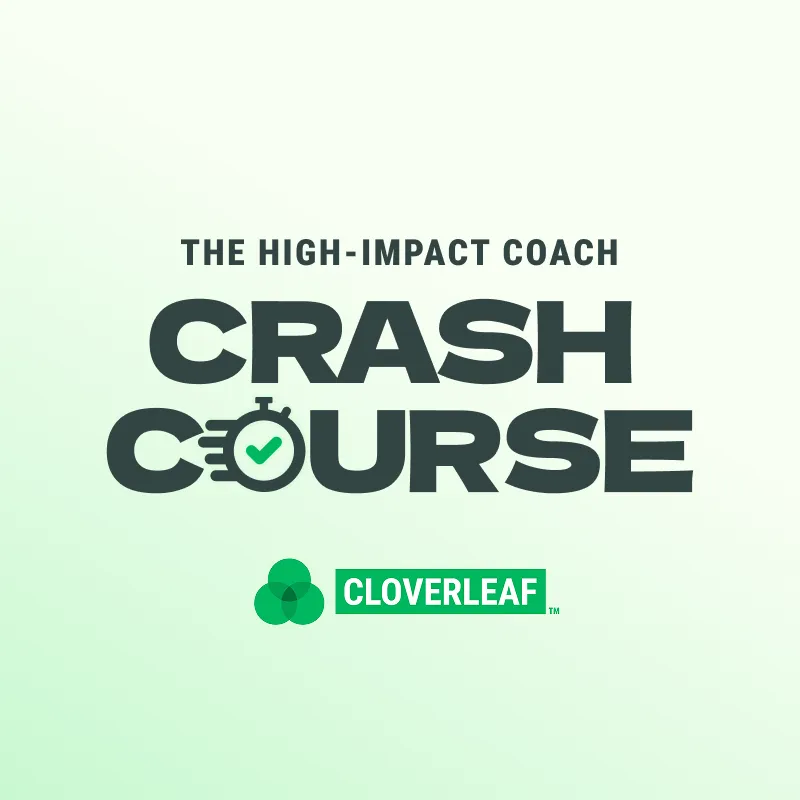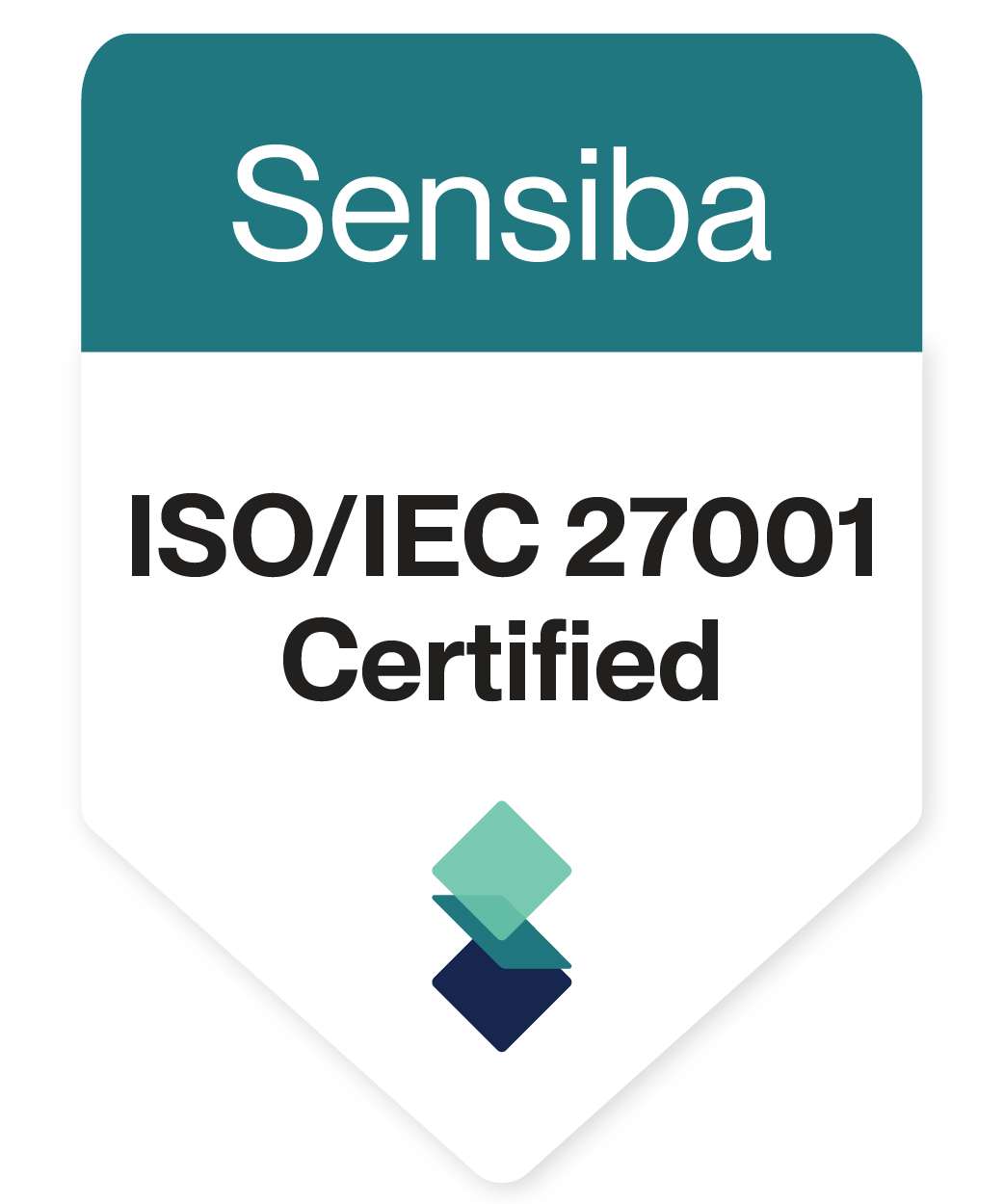If you’re an independent coach or consultant, you’ve probably heard the same advice on repeat: define your niche, build your brand, automate your outreach.
But none of that addresses the real problem—your revenue is still tied to your hours.
You’re already doing good work. You’ve built credibility. But the business model you’re operating in may be maxed out. And when growth means more sessions, more hustle, or more content to feed the machine, it’s easy to feel stuck between burnout and a bottleneck.
This article exists because coaches deserve better business development ideas that build sustainable, scalable income that honors the work they’re already doing. Especially those of you working inside organizations, where your coaching is already sparking change.
You probably don’t need another marketing funnel. You need a business model that helps you scale your impact, while keeping the depth, trust, and transformation your clients count on.
If your business still feels stuck, it may not be because you haven’t tried hard enough. It’s because the playbook you were given was never designed to scale the kind of work you do.
Get the High Impact Coach Crash Course to see how to build a coaching business that delivers more value, serves more clients, and grows more revenue without burning you out.
What Most Business Development Advice For Coaches Gets Wrong
You’ve probably tried to follow the playbook: grow your visibility, market your niche, build a funnel. Maybe you even launched a course or mapped out a content calendar. But for many coaches, those efforts don’t change the math underneath it all—your revenue is still tied to time.
But here’s the tension—none of it changes how your business actually makes money.
Most business development advice assumes growth means:
- Selling more hours
- Chasing more leads
- Launching more things
That might increase activity. But it rarely increases margin or energy.
And most tools meant to support you, like assessments or coaching platforms, often feel like expenses to justify, not assets to leverage.
The result? Coaches spend more time marketing than delivering. You’re working harder on your business than in your zone of impact.
Experienced coaches rarely need another tactic. The real issue isn’t a lack of effort—it’s a lack of leverage. What’s missing is a model that helps your expertise work harder than your calendar ever could.
Scale Your Coaching Business Without Adding More Hours
Strategy to help you grow a more sustainable coaching business.

A Better Way For Coaches To Think About Business Development
The goal isn’t more sessions. Its building offers that do more work than your calendar ever could.
Coaches don’t lack value. What they often lack is a structure that makes that value visible, repeatable, and scalable. That’s the shift.
Here’s what that looks like in practice:
- Stop treating assessments like sunk costs. Start using them as strategic anchors—baked into your packages, not itemized. With Cloverleaf, unlimited assessments become a differentiator, not an expense.
- Use tech to extend your presence. Daily nudges, team insights, and coaching prompts keep your voice in the room—even between sessions. That’s value clients will pay more for.
- Build in margin—without apology. Structure offerings so one client pays for your tech investment. That’s not upselling—it’s smart business design.
- Position yourself as a growth partner. Your packages shouldn’t feel like hours-for-hire. They should feel like a pathway to deeper leadership, stronger teams, and measurable change.
Marcy at Revel Coach didn’t just “add Cloverleaf” to her coaching. She used it to land a $13K deal with one client—and built a passive revenue stream that continues paying off.
What to Say (and Not Say) in Pricing Conversations
This is where many coaches lose leverage—by explaining too much, or apologizing for including tools and tech in their pricing.
You don’t need a script. But you do need language that reinforces value, without inviting unnecessary scrutiny.
Here’s how to talk about your offer in a way that reinforces value and positions you as a strategic investment, not a service expense.
✅ Say This:
“This includes ongoing development nudges and access to multiple assessments—there are no extra fees for reports or licenses.”
→ Clear, simple, all-inclusive. Sets boundaries without sounding defensive.
“Between sessions, your team will get personalized insight to keep the work moving.”
→ Reinforces that you’re delivering continuous value, not just time blocks.
“Think of it like a leadership gym—regular reps that support long-term growth, not just one-off sessions.”
→ Anchors your offer in outcomes, not features.
Use a relatable metaphor if needed, but stay grounded in what the client actually values: development that sticks.
🚫 Avoid This:
Listing platform costs separately
→ It invites comparison shopping. Bundle your tools as part of the overall experience.
Framing the tech as a bonus or add-on
→ That devalues it. If it improves results, it belongs in your core offer.
Over-explaining how the tools work
→ Don’t turn your proposal into a demo. Stay focused on what clients will experience and gain.
The shift is simple but powerful:
Don’t itemize your tools. Integrate them into your value.
You’re not selling software. You’re selling transformation that sticks.
Would it help to develop a few “talk tracks” based on different pricing scenarios (e.g., team coaching, executive programs, or nonprofit discounts)?
5 Tangible Business Development Levers (and How to Use Them)
There are levers you can start using now—especially if you’re already integrating coaching technology into your offers. Platforms like Cloverleaf don’t just enhance your delivery; they open up new business models for coaches.
Done right, the tech you include in your services shouldn’t feel like a cost to recoup. It should become a core part of your revenue engine.
Here’s how:
1. Recoup Your Platform Investment Fast
- Bundle your platform access into your offer.
- Skip the line-item breakdown—position it as part of the development journey, not an added fee.
- In many cases, one well-structured contract can cover your full platform cost for the year.
Coaches using this approach often find their platform pays for itself, then keeps paying.
2. Use Assessment Access as a Differentiator
- Frame multi-framework access (DISC, Enneagram, 16 Types, etc.) as a unified insight system.
- Highlight the breadth and continuity—not just the reports, but the ongoing awareness.
- Position it as part of a tech-enabled leadership or team development experience.
This isn’t about one-time results. It’s about insight that sticks and scales.
3. Client Upcharge Without Guilt
- Add a cost per user per month to your pricing model.
- Works especially well for team or cohort-based engagements.
- This is more than a “markup” it becomes a transparent way to show value-per-person and cost-to-impact alignment.
This gives you healthy margin without uncomfortable conversations.
4. Convert Clients Into Direct Platform Customers
- If the client buys the platform directly, you can earn commission (e.g., 15%).
- More importantly, it deepens your role—you’re not just the coach, you’re the trusted integrator.
- As they scale use internally, your advisory role grows too.
In some cases, this conversion opens the door to broader L&D contracts.
5. Use Usage Data to Expand Within the Org
- Start with one team or pilot cohort.
- Use built-in engagement metrics, completion data, and coaching touchpoints as proof of impact.
- Then pitch a larger initiative—leadership acceleration, onboarding cohorts, or org-wide team enablement.
This is how one client turns into five. And how coaching becomes embedded, not episodic.
How to Build This Into Your Business Model
If you want to shift from effort-based income to leverage-based revenue, you don’t need to rebuild your entire business. You need a structure that creates margin, scale, and repeatability—without losing the personal, high-impact work you already do.
That’s where the Revenue Buckets model comes in.
Think of your services in three layers:
1️⃣ High-Investment, Low-Return
This is the category most coaches start in—and stay in too long. Think: 1:1 hourly sessions, low-fee subcontracting, or small projects sold directly to individuals. These are deeply personal but often hard to sustain.
2️⃣ Flat, Reliable Income
Retainers, content development, or fractional roles that pay the bills. These offer consistency, but not much scale. They’re stable, but rarely transformative for your business.
3️⃣ Low-Investment, High-Return
This is the growth engine. Offerings like team coaching cohorts, tech-enabled leadership programs, and hybrid solutions that combine your expertise with scalable delivery.
This is where coaching platforms—like Cloverleaf—belong.
You’re not using the platform instead of coaching. You’re using it to make your coaching more visible, accessible, and consistent across a broader reach. And that opens the door to…
- Group programs with per-user pricing
- Retainer models that include ongoing development nudges
- Team-based engagements that extend beyond the initial session
- Add-on analytics, insights, and coaching dashboards that deepen your role
When positioned in your middle bucket, coaching tech isn’t an expense to manage—it’s an asset that fuels scalable revenue.
Start simple:
- Run a 6-week team coaching pilot that includes the platform
- Build a “leadership jumpstart” package for mid-level managers
- Offer a monthly insight subscription as a standalone service or retainer add-on
The goal isn’t to replace your existing offers. It’s to create a bridge between bespoke work and scalable impact.
And as that bridge strengthens, you’ll find your highest-leverage work doesn’t come from adding hours—it comes from designing offers that keep working, even when you’re not in the room.
How Cloverleaf Supports This Shift
Cloverleaf isn’t just a tool—it’s your business model multiplier.
It gives you the infrastructure to scale your coaching business without scaling your hours.
- Delivers daily coaching nudges—so your voice stays in the room between sessions, reinforcing the work and creating ongoing engagement clients pay for.
- Consolidates 12+ assessments into one platform—giving you a built-in insight system that feels customized, but scales across teams or cohorts.
- Automates session prep, follow-up, and development prompts—freeing up your time for strategy, not admin.
- Surfaces user data and team trends—so you can prove impact, pitch follow-on programs, and expand into new departments or business units.
When you use Cloverleaf well, it doesn’t just make coaching easier—it makes expansion inevitable.
This is what makes it a true partner in your growth. Not just a tool you use, but a platform that works alongside you—powering new offers, deeper client relationships, and longer-term engagements.
The Future of Coaching Business Development Is Smarter Packaging—Not Just More Hustle
The most effective coaches aren’t doing more. They’re building smarter offers that make their value visible, repeatable, and scalable.
That starts with rethinking how you price, position, and deliver your work, not as sessions, but as a growth system. One that honors your craft, deepens your client relationships, and creates income that doesn’t rely on more hours.
You don’t need to become a full-time marketer. You don’t need another funnel.
You need a model that works as hard as you do—and technology that makes your value easier to experience, share, and scale.
🙋 FAQ
Q: Do I have to disclose my platform costs to clients?
A: No. We recommend bundling the platform into your pricing as part of your overall coaching solution. It’s part of the value you deliver—not a separate expense to justify.
Q: What if my clients already use other tools or assessments?
A: Great. Position your tech as a unifier, not a competitor. It can consolidate fragmented insight and give teams one central place to work from, without forcing them to start over.
Q: I only coach individuals. Can this still apply?
A: Yes. Tech-enabled coaching isn’t just for teams. It allows you to stay present between sessions, reinforce key themes, and provide personalized development that supports real change, whether you’re working 1:1 or across an entire organization.


